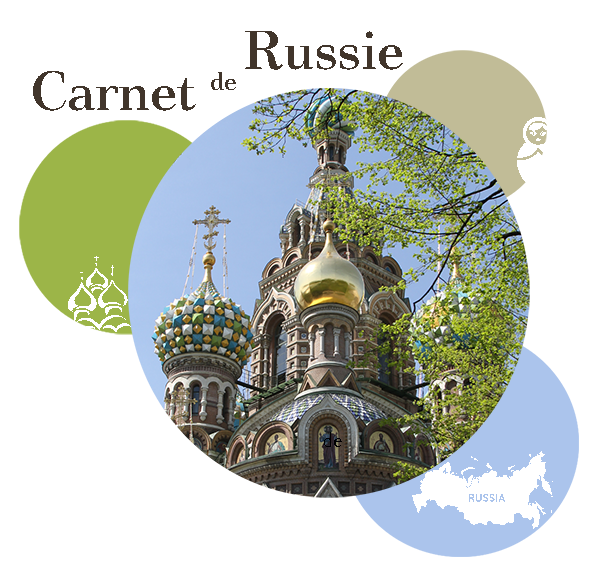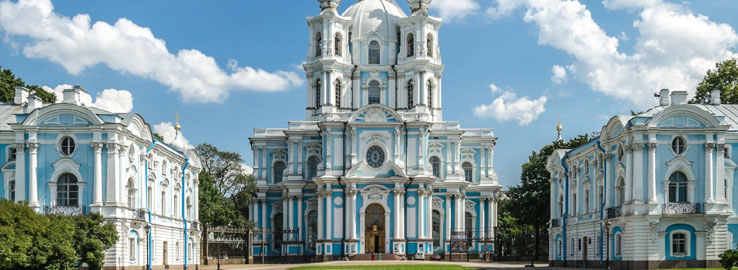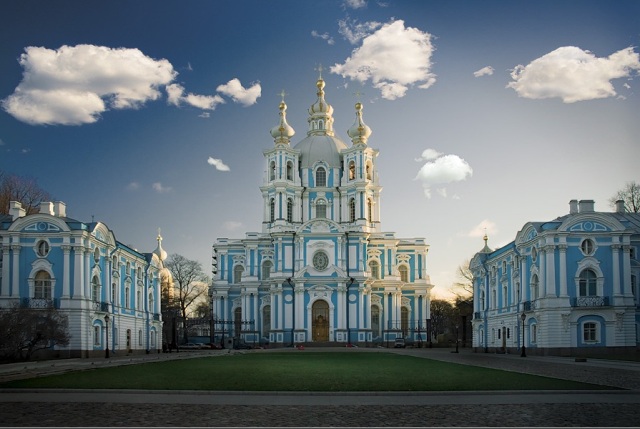L’école de Relations Internationales fait partie de l’université d’Etat de Saint-Pétersbourg. Deuxième plus grande faculté de Russie après la très réputée MGIMO de Moscou, Saint-Petersburg State University a été fondée par Pierre le Grand en 1724 ce qui fait donc d’elle la plus vieille université du pays. Presque 3 siècles plus tard, la faculté est internationalement reconnue: tous les ans, 2500 étrangers viennent étudier à Saint-Pétersbourg, de nombreux prix Nobel ont suivi sa formation et des personnalités célèbres telles que Lénine ou l’actuel président Vladimir Poutine sont passés en ces lieux.
L’université d’Etat est divisée en plusieurs facultés spécialisées dans différents domaines: biologie, chimie, économie, Histoire, sciences politiques, sociologie etc. Elle possède différents campus dont celui situé sur l’île Vassilievsky. L’école de Relations Internationales se trouve elle à deux pas du couvent Smolny (voir plan ci-dessus et photo au bas de l’article)
/! encore peu d’informations sur l’école de RI en particulier, la présentation pourra donc être complétée une fois sur place
Pour les anglicistes, la description du site « Campus Europae » >(plus bas contacts et photo du couvent Smolny)
General information
St. Petersburg State University was founded by Emperor Peter the Great in 1724. From the time of its foundation until the end of the XVIII century, the University, together with the Academic Gymnasium, was an integral part of the Russian Academy of Science. Today the University still adheres to Peter the Great’s principle of the unity of education and science. The core of the University policy is the combination of teaching and research. Over almost three centuries, hundreds of outstanding scholars, cultural figures have been honor to the University. Suffice it to say that seven University alumni and ex-members have won Nobel Prizes: Ivan Pavlov (1904) and Ilia Mechnikov (1908) in physiology and medicine, Nikolay Semenov (1962) in chemistry, Leo Landau (1962) and Alexander Prokhorov (1964) for Physics, Vasilij Leontyev (1973) and Leonid Kantorovich (1975) for economics.
University Today
University currently has about 27,000 undergraduates and more than 5,500 graduate students. Every year about 2500 foreign students from more than 90 countries of the world participate in various academic programs. The university offers 92 programs of professional higher education and 31 areas of study for graduate students. There are 20 faculties, a Department of Military Education, and a Department of Physical Education and Sports, 14 research institutes at the faculties which carry out work in the fields of mathematics, biology, physiology, chemistry, geography, geology, language and literature, management, physics and sociology.
St. Petersburg State University is a high-power information-telecommunications center, meeting the needs of not only the university itself, but also providing services for a significant number of scientific and educational establishments in the city. The university telecommunications network connects more than 300 university buildings, which includes over 500 information servers and more than 5,000 personal computers. About 20,000 students and employees use the Dial-up system to access the resources of the university’s network.
The Gorky Scientific Library, which was founded in the middle of the 18th century, is an important part of St. Petersburg State University. In terms of the wealth and diversity of its collection, this library is one of the most extensive among universities libraries. The University publishing house which is the largest in northwest Russia is a steady source for supplying the library with books. The University journal «St. Petersburg University» is published every fortnight by the University publishing house. The University has the Museum of History, the Mendeleev Museum-Archives, and the Museum of Mineralogy on its campus. In addition, there is Center of Culture and Business Cooperation, the botanical garden, the swimming pool, and a variety of sports facilities at the disposal of students and staff members.
International Activity
St.-Petersburg State University maintains international cooperation in various areas of science, education and culture. The University cooperates with over 213 institutions of higher education in Europe, America and Asia. The greatest amount of its international activity is with Germany (25), China (18), Korea (15), USA (15), and Finland (9). The university promotes exchange programmes with foreign students, teachers and research staff members; participates in international educational programs and exhibitions. St.-Petersburg State University is member of 20 international organizations.
Campuses
There are two main campuses of St. Petersburg State University: a campus on Vassilievsky Island and one at Peterhof. The Vassilievsky campus is located in the center of the city on Vassilievsky Island. This campus houses the university administration and the Main Library in the Building of Twelve Colleges and a number of faculties. The Peterhof campus is in the beautiful suburban area of Peterhof. Most science departments are located there.
16 faculties are open to accept the exchange students from the partner universities in the framework of Campus Europae project:
- Asian & African Studies
- Biology and Soil Science
- Chemistry
- Economics
- Geography & Geo-ecology
- History
- International Relations
- Journalism
- Law
- Mathematics & Mechanics
- Medicine
- Philosophy
- Political Science
- Physics
- Psychology
- Sociology
Contacts:
School of International Relations :
- adresse: rue Smolny, Saint-Pétersbourg
- site: http://www.sir.spbu.ru/
Saint-Petersburg State University:
- adresse : 7-9, Universitetskaya nab., St. Petersburg, 199034, Russia
- tel: +7 (812) 328 2000
- site : http://eng.spbu.ru
Article à retrouver : School of International Relations > Présentation




